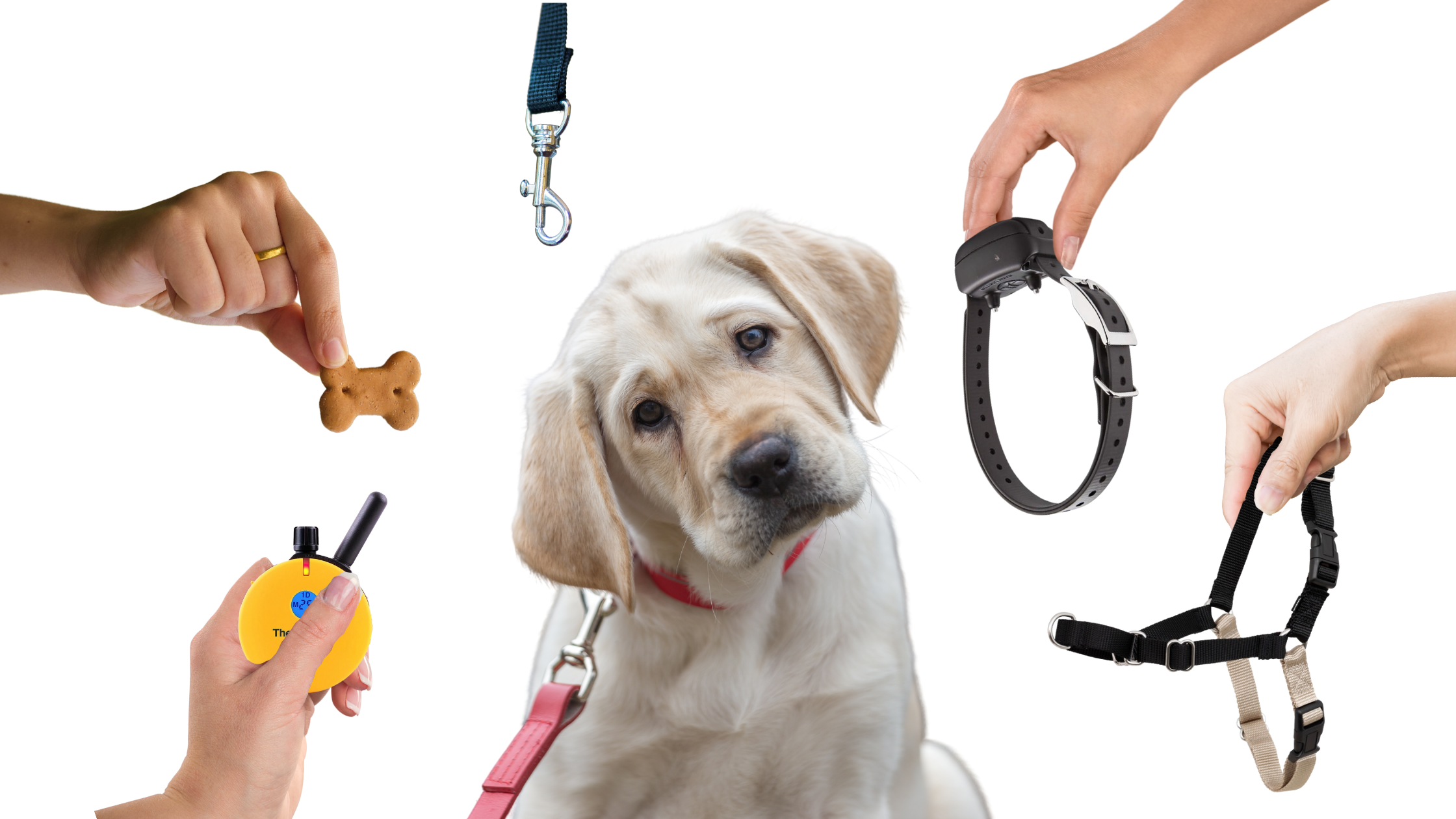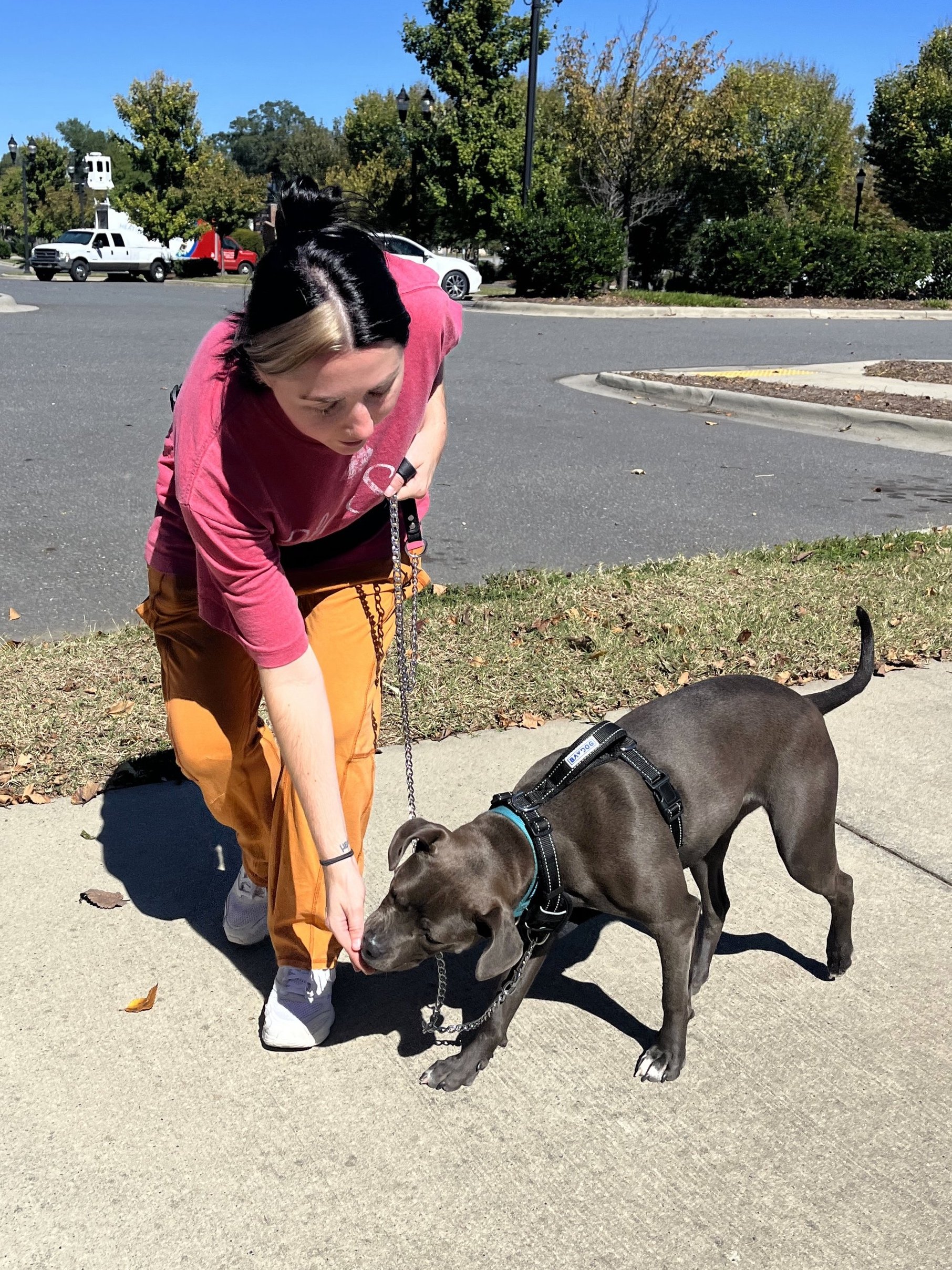
Training Methods
What we use, and why.
When selecting a potential dog trainer, it is crucial to ask about their training methods. Understanding your trainer's approach will provide you with insights into how they will handle your dog and guide you in your interactions with your pet.
Canine Compass Dog Training is dedicated to using positive-based training techniques and always avoiding the use of aversive tools or methods.
As you delve into the world of dog training, you'll encounter a vast array of information and perspectives. The landscape can be overwhelming, with numerous techniques and opinions vying for attention. However, it's essential to approach this journey with discernment and a keen eye for methods that prioritize your dog's well-being and foster a positive, trusting relationship.
Some trainers advocate for approaches that rely on coercion and intimidation, employing tools such as leash corrections, e-collars, shock collars, prong collars, and choke chains. While these methods may yield short-term compliance, they can also instill fear and anxiety in our beloved companions, undermining the foundation of trust essential for effective training.
Canine Compass Dog Training firmly believes in force-free, positive reinforcement methods that nurture mutual respect and understanding between you and your dog. Through patience, consistency, and clear communication, we demonstrate that force is unnecessary to achieve desired behaviors. With this approach, any breed can learn and thrive, guided by encouragement and respect rather than fear.
Embrace a training philosophy that is scientifically backed and honors the inherent dignity and intelligence of every dog. Together, we'll embark on a journey towards harmonious companionship and lifelong learning.
Experience the difference yourself
In-home dog training around the distractions of real life
Rest assured,
Canine Compass Dog Training follows the science.
Here our owner Ellie is training a Black Rhino to paint using its upper lip for a fundraising event.
“Through my wide array of diverse training experiences, I have gained invaluable insights that inform Canine Compass’ dog training practices today. My understanding of animal behavior transcends species boundaries, allowing the ability to tailor training methods to suit the unique needs of each individual animal. At the heart of this approach lies the unwavering belief in the power of positive reinforcement—a method proven time and time again to be the most effective way to train animals, regardless of their species.
My comprehensive understanding and practical expertise combine to deliver unparalleled results for you and your canine companion.”
-Ellie Wheeler, BS, FDM, CPDT-KA, Dial Method Coach, AKC Evaluator
Canine Compass Dog Training Owner
With extensive background in training experience, examination of current research, and continuous professional development, our expertise is built on a solid foundation of knowledge and practical experience. We've diligently studied the latest findings, attended industry conferences, and been immersed in relevant literature. However, what truly sets Canine Compass apart is our hands-on, custom approach. Over the years we have been dedicated to the craft of behavior modification, working tirelessly with a wide array of animal species, ranging from majestic elephants to beloved house cats.
Why we choose NOT to use e-collars, vibrate collars, prong collars, or leash pops to “correct” unwanted behaviors, even though they seem to be popular among other trainers:
Even though many dog trainers in the Charlotte area use training tools like e-collars, prong collars, and even leashes to correct behavior, it doesn’t make it right, ethical, or as effective as positive-based methods. Science has shown that rewarding dogs for their efforts leads to faster learning and greater willingness to engage in training. Punishment, on the other hand, may suppress behaviors temporarily but fails to produce lasting results and can even lead to unwanted side effects like increased reactivity or sensitivity. This means that:
Even though punishment can work in stopping a behavior in the moment, it has been proven to NOT be an effective technique to get long lasting results.
By focusing on positive reinforcement, you can create a supportive learning environment where dogs are set up for success. The Canine Compass approach prioritizes building trust and confidence, resulting in long-term behavioral changes without the risk of "fallout." With over a decade of dedicated experience in utilizing positive reinforcement methods, our track record speaks for itself: it works, and it works exceptionally well. Through commitment to positive reinforcement, trainers across the world have consistently witnessed the transformation of dogs into well-behaved companions, without any negative repercussions down the line. Unlike punitive approaches that may inadvertently lead to the emergence of behavioral issues later in life, our methods prioritize the long-term well-being and happiness of your furry friend.
We’ve personally seen the aftermath of e collars and shock collars, because many of our clients have come to Canine Compass after seeing a “balanced trainer” initially. Even if the training collar was only used when the dog was younger, the fallout occurring years later down the road is far greater than the problems the owners were initially trying to fix! The regret those owners have experienced after going through a balanced training program was enough for them to reach out to us and try something different.
If positive reinforcement and positive classical conditioning works even for severe behavior modification cases, then there is no reason to use punishment methods at all. The science tells us punishment does not work as well as some might think. And it's definitely not worth the fallout down the road!
What about using punishment only when trying to decrease reactivity and barking?
If you are working through a behavior modification case that involves aggression, and you are punishing the behaviors you don’t want to see (such as barking or growling), you aren’t making your dog feel better about the thing they are afraid of. In fact, you are teaching them to give no warning sign at all, and increasing the likelihood for a bite or attack. By punishing a growl or bark, you are merely suppressing the symptoms of a greater problem– and NOT actually treating it.
But what about collars that only beep or use the vibrate function?
Unfortunately, beeps and vibrations can be just as aversive to dogs, even though the intention is to be less aversive. In many of those cases, dogs experience just as much fallout as dogs who have experienced shocks from their collars. In other cases, there are very strong-willed dogs where the vibrate function does not phase them, and they become used to the vibrate or beep function. Not in a way where it is comfortable, but in a way where they can push through the discomfort and react how they want to react to a trigger. This brings your training to a halt unless you increase the aversiveness of your punisher. And do you really want to have to do that?
Punishment can increase anxiety and fear and harm the relationship between the dog and their owner.
This, in turn, will make training more difficult for you in the future.
All of which can be avoided by following science-based and ethical training methods.
Canine Compass Dog Training is owned and operated by a member of the Pet Professional Guild (PPG), a Certified Professional Dog Trainer (CPDT-KA), and a Certified Family Dog Mediator (FDM).
These are just a few of the memberships and certifications we hold, but they are the most stringent and challenging to obtain for dog trainers.
CPDT-KA and
the LIMA Protocol:
Are they enough?
To the right is a graphic showing the hierarchy to training with LIMA pulled from the Certification Council of Professional Dog Trainers website. You will notice positive punishment (adding something to lessen a behavior. Ex: add shock to stop barking) is the very last thing to do after you have exhausted all other options, under the guidance of the LIMA protocol. It is EXTREMELY rare to get to that point, and should be avoided as much as possible, for all trainers.
However, many trainers with the CPDT-KA certification still base their programs on using leash corrections or e collars, even though they should be following the other initial LIMA steps first.
But Canine Compass Dog Training has never had to use tools, training collars, or harsh leash corrections, even for extreme aggression cases with a bite history. We firmly believe it is NEVER necessary to use force when working with a dog, which is why we have proven our dedication to being force free by becoming a certified Family Dog Mediator and joining the Pet Professional Guild.










